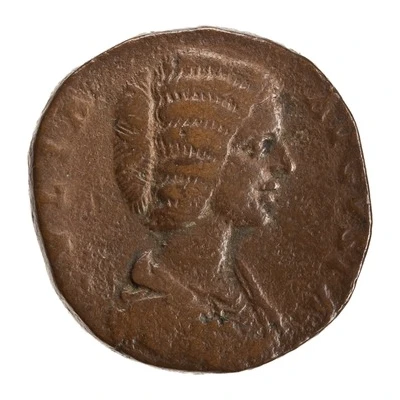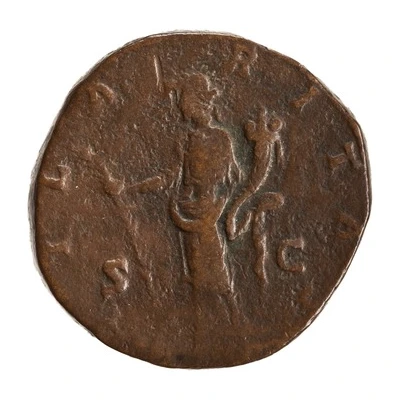Sestertius - Julia Domna FORTVNAE FELICI S C; Fortuna
| Bronze | - | - |
| Issuer | Rome › Roman Empire (27 BC - 395 AD) |
|---|---|
| Empress | Julia Domna (193-211) |
| Type | Standard circulation coin |
| Years | 196-211 |
| Value | 1 Sestertius = ¼ Denarius |
| Currency | Denarius, Reform of Augustus (27 BC – AD 215) |
| Composition | Bronze |
| Shape | Round (irregular) |
| Technique | Hammered |
| Demonetized | Yes |
| Updated | 2024-10-06 |
| Numista | N#270345 |
|---|---|
| Rarity index | 100% |
Reverse
Fortuna, draped, seated left on low seat, holding cornucopiae in right hand and rudder set on globe in left hand; at feet, child; behind, statuette on column.
Script: Latin
Lettering: FORTVNAE FELICI S C
Translation:
Fortunae Felici Senatus Consultum.
To Fortune, the happy. Decree of the senate.
Comment
Source:Online Coins of the Roman Empire (OCRE)
Interesting fact
The Sestertius coin featuring Julia Domna, the wife of Emperor Septimius Severus, is notable for its depiction of the goddess Fortuna on the reverse side. Fortuna was an important deity in ancient Roman religion, associated with good luck, prosperity, and fertility. The image of Fortuna on this coin is particularly interesting because it shows her holding a rudder, which symbolizes her role in guiding the fate of individuals and the Roman state. This coin was minted during a time of significant political and social change in the Roman Empire, and the image of Fortuna may have been seen as a way to promote the idea of stability and good fortune during a period of uncertainty.

